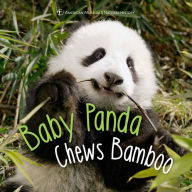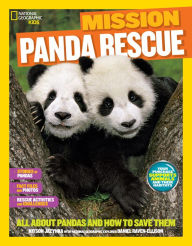Did you know today is National Panda Day? In our classroom I am sharing the following information with Charlie:

On March 16, National Panda Day draws attention to he world’s unique bears. Pandas are also one of the world’s most endangered animals. Conservationists and animal lovers alike spread the word about the international community dedicated to protecting and restoring habitat.
Native to China, giant Pandas are members of the Bear (Ursidae) family. Their rapidly shrinking habitat is a major cause for concern. As an endangered species, Panda breeding programs are rare. In the wild, there are approximately only 1,864 (according to the World Wide Fund for Nature) and 100 living in zoos around the world.
Their white face and black eyes and body, Panda bears are easily identifiable. Dspite their sweet disposition, they tend to isolate themselves in the wild. They eat mostly plants and do not hibernate in the winter like many other bears.
HOW TO OBSERVE #NationalPandaDay
Share your love for pandas! While you do, invite friends and family to donate to your local zoo or wildlife sanctuary. Support protecting their habitat.
Charlie and I are going to visit to our local zoo. We will learn about Pandas, how they live and grow in their habitats. I am going to find a documentary about Pandas comparing their similarities and differences to other bears in the wild.
Use #NationalPandaDay on social media.
Baby Panda Chews Bamboo, by Ben Richmond

This newly released non-fiction book features stunning photography following a baby panda from birth to adulthood. From the American Museum of Natural History, this book is perfect for any young child interested in the life of pandas. It’s full of fascinating panda facts accompanied by close-up photographs of pandas engaging in all sorts of day-to-day behaviors. The text is short and simple to read, perfect for early readers and read-a-louds
.Panda Kindergarten, by Joanne Ryder and Katherine Feng

Another great non-fiction book for young children,
Panda Kindergarten introduces young readers to the cubs who live at the China Conservation and Research Center for the Giant Panda at Wolong Nature Preserve, dubbed Panda Kindergarten. At the facility, the cubs learn important life skills that prepare to be released into the wild once they’re older. Full-color photography of the cubs makes this an even more enchanting read.
Mission: Panda Rescue: All About Pandas and How to Save Them, by Kitson

Another fascinating non-fiction panda book, this one is designed for slightly older readers (10-12), with a larger focus on information about pandas. The book is part of National Geographic’s Animal Rescue series, which focuses on endangered animals. It features background information on pandas and conservation efforts, with appealing images of pandas interspersed throughout.
Thank you,
Glenda, Charlie and David Cates